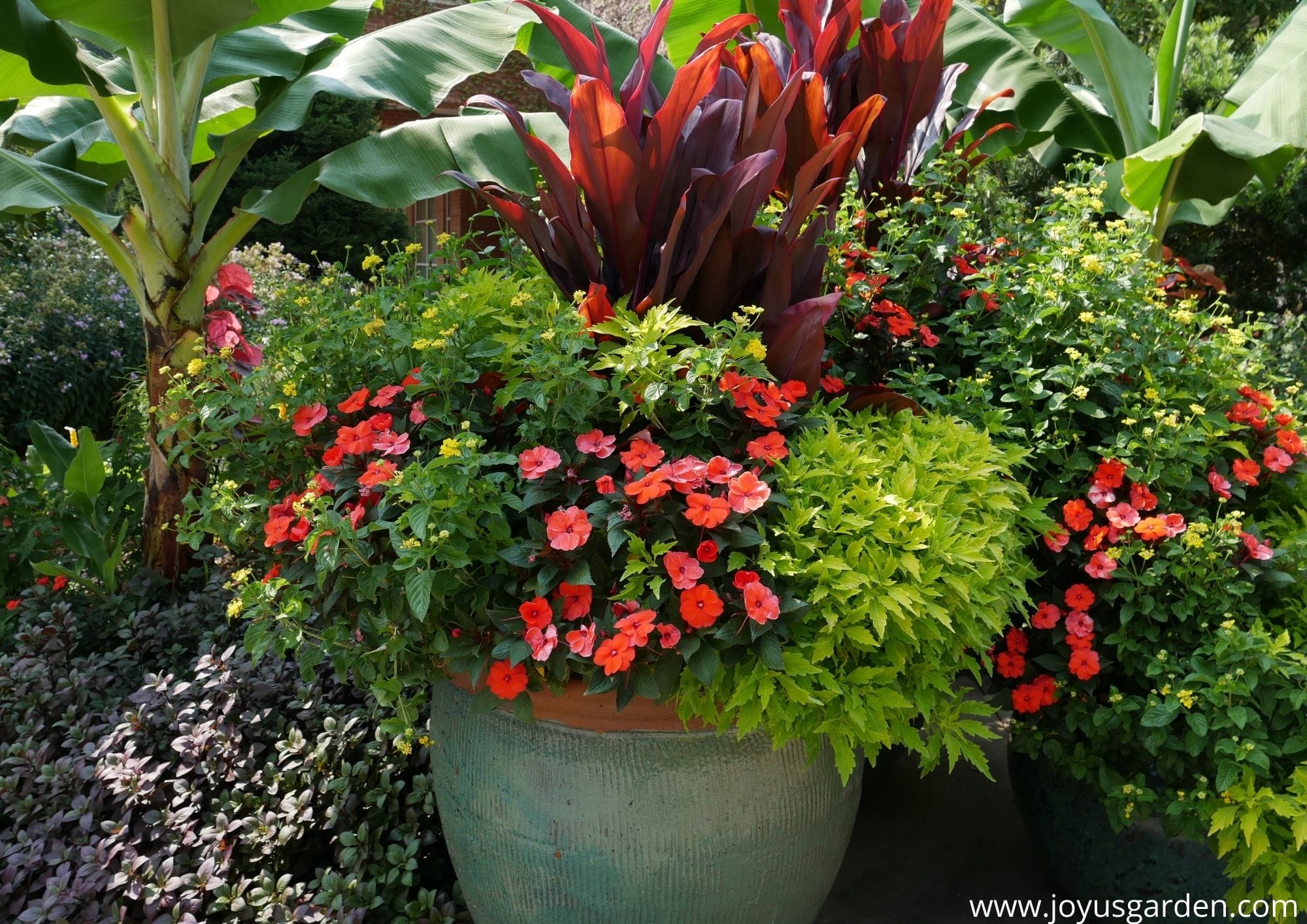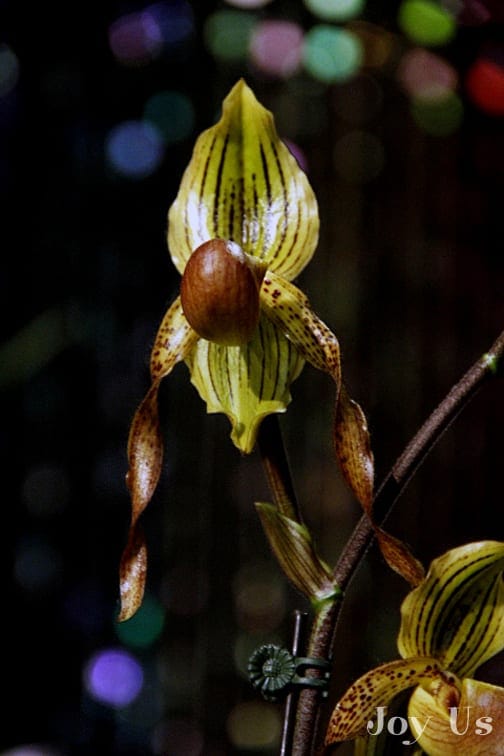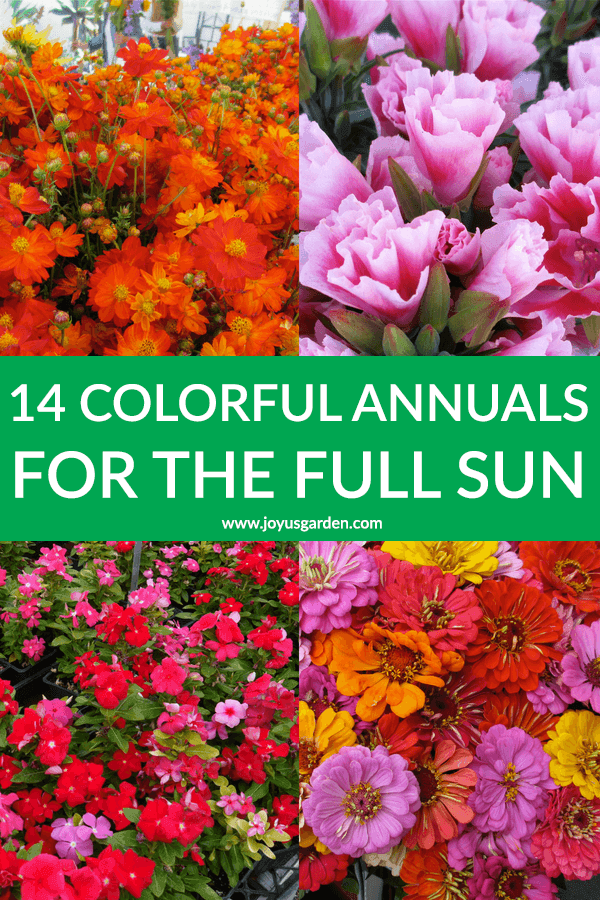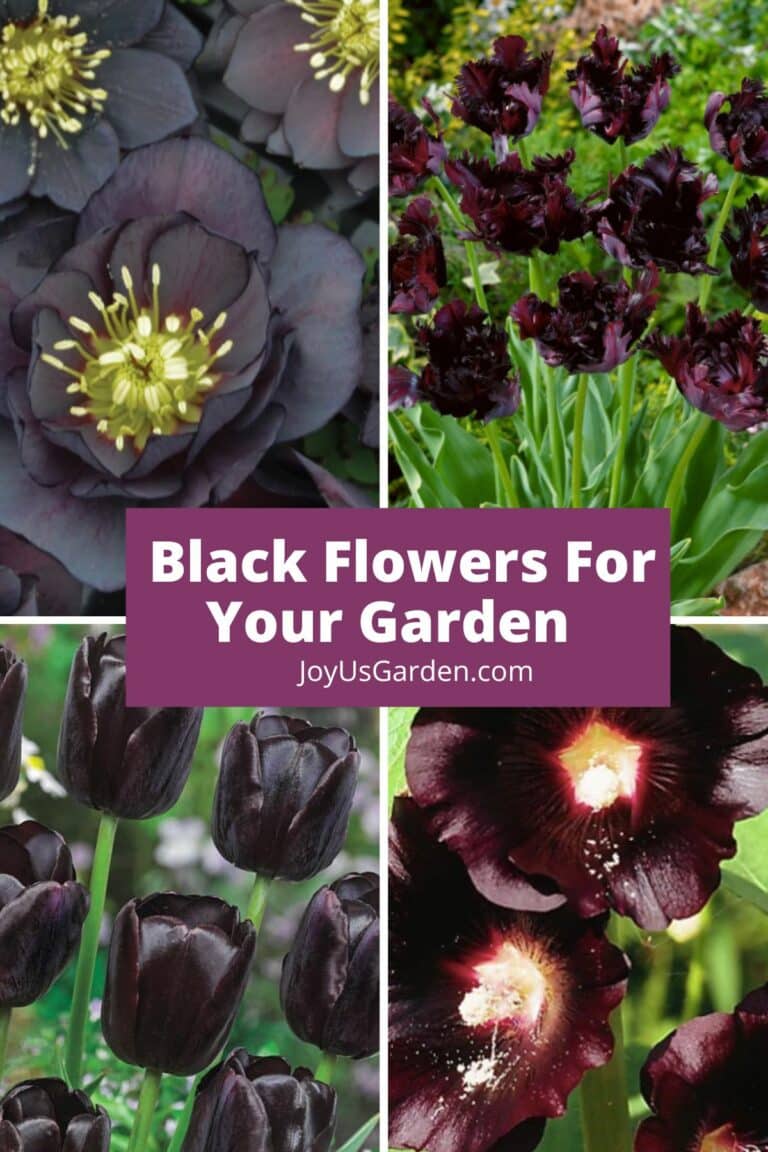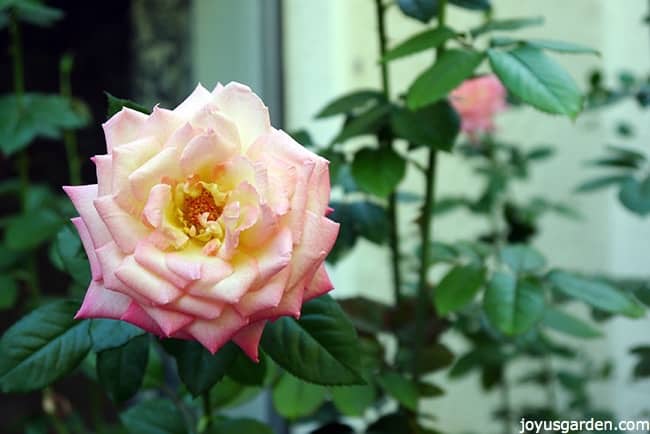Organic Flower Gardening: Good Things To Know
Flower beds need a little extra loving care in order to thrive but it’s not hard to do at all. These organic flower gardening tips will get you well on your way.
Whatever flowers and colors you like and use, we all know they draw our eyes right in. Greens are so restful, all-white is extremely calming, and pastels have been cottage garden favorites for centuries. But my, how those vibrant blooms steal the show.
No matter the color scheme you choose for your garden bed, the care and growing principles are the same.
If you’re a beginner, just know we all start somewhere. Gardening is a never-ending learning experience!
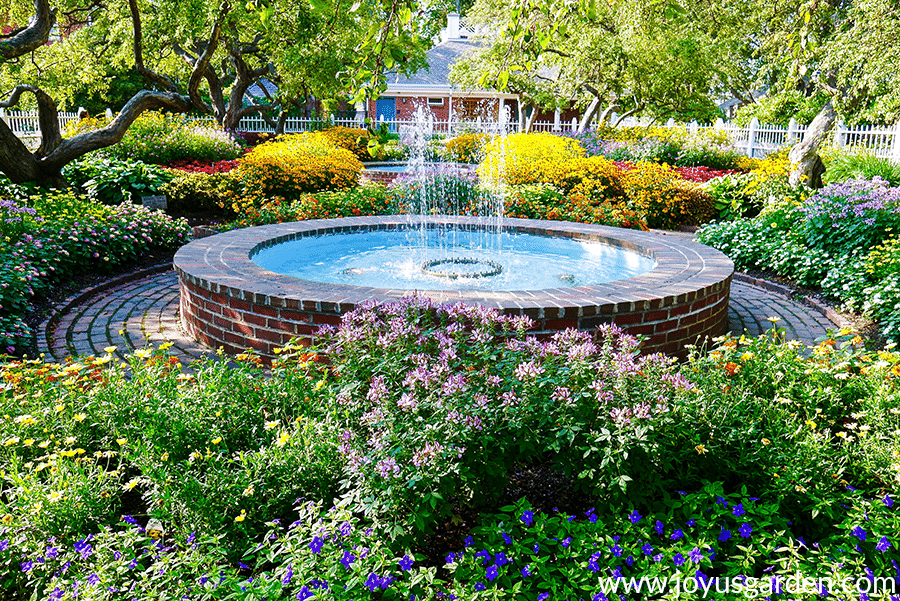
Flowers are often the focal point of a garden and provide us with visual delight. As Claude Monet said: “I must have flowers, always, and always.”
What is a Flower Bed?
Let me first clarify what I mean by a flower bed – a garden plot with trees, shrubs, perennials, and annuals. It’s basically a garden where any type of blooming plants are grown. Growing your garden organically is always the best way both for you, the critters that visit, and the environment.
Annuals – these grow for 1 or 2 seasons and bloom non-stop. Examples are marigolds, impatiens, and pansies.
Biennials – these are much less common but worth a mention. They grow in the 1st year, bloom in the 2nd, and then die. Examples are hollyhock and foxglove.
Perennials – these live for more than 2 years and usually for much longer with proper pruning. Examples are salvias, penstemon, and daylilies.
Shrubs – these are the backbone of the garden. They add interest and form. Examples are rhododendron, oleander, and hydrangea.
Related: 14 Colorful Annuals For Summer Sun
Good to Know About Organic Flower Gardening
When you become a seasoned gardener like me, then you’ll always think ahead to the next season. In spring when the growing season kicks into full throttle, you need to clean up after the winter months. Branches and leaves have fallen and need to be picked up. Leaves with virus or disease, as well as dead stalks, need to be removed.
And then there are the weeds which start to appear – they’re a chore in their own category! Be sure to prune your perennials back if you haven’t already done that in the fall. Even if you have done this, they’ll probably need a little more grooming. This is also a good time to divide perennials as well as plant them.
Perennials, in general, aren’t deep-rooted and annuals are even less so. The latter have fine shallow roots. Anything that flowers for a season or 2 continuously such as annuals will want more to keep them going in terms of feeding, deadheading, and watering.
The care you give both perennials and annuals depends on what they are, their requirements, the growing conditions, and how long your growing season is.
For instance, anything in the shade with good soil will require less water than anything in the sun with windy conditions. Keep an eye on your flower beds and pay attention to them. Sometimes your garden might need watering more than other times depending on the weather, especially those shallow-rooted annuals.
Related: How To Plant Perennials Successfully
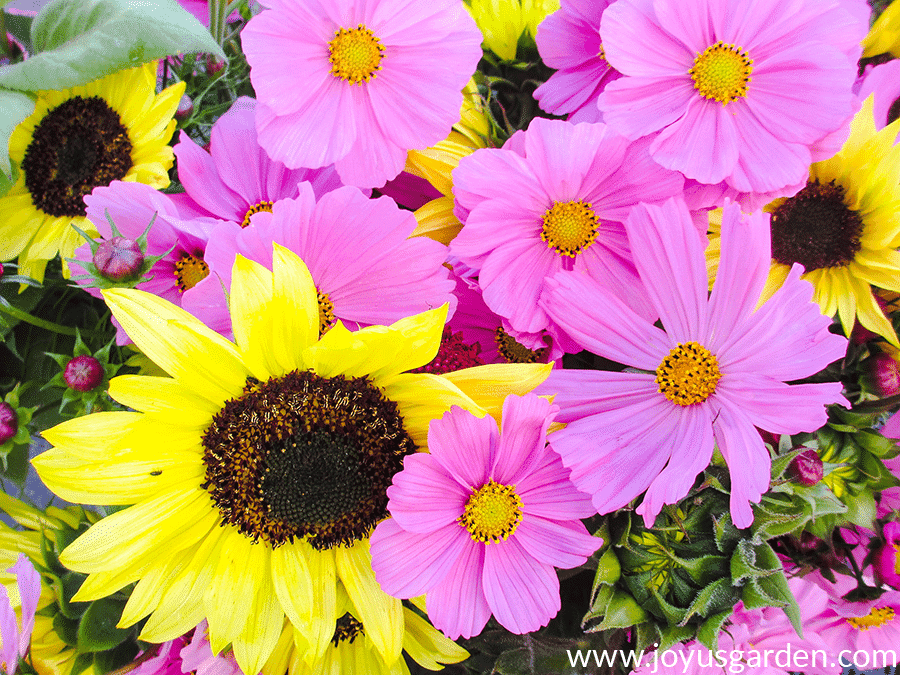
Organic Flower Gardening Tips
Know the exposure
Make sure the plants you are choosing are suited to the exposure. There are plants that do best in the shade, full sun, and part shade or part sun. Do a little research online or in books to get an idea of which plants do well in your area.
There should be labels on the grow pots or tags on the plants that indicate what they are, what exposure they’ll do best in, and other helpful information. Use them as a resource. This is also where a reputable nursery comes into play as they’ll be able to guide you more so than a big box store in terms of advice.
Many nurseries will have their plants displayed in sections that say something like “sun perennials”, “shade shrubs”, etc. This will definitely make it easier for you when shopping, especially if you’re brand new to flower gardening.
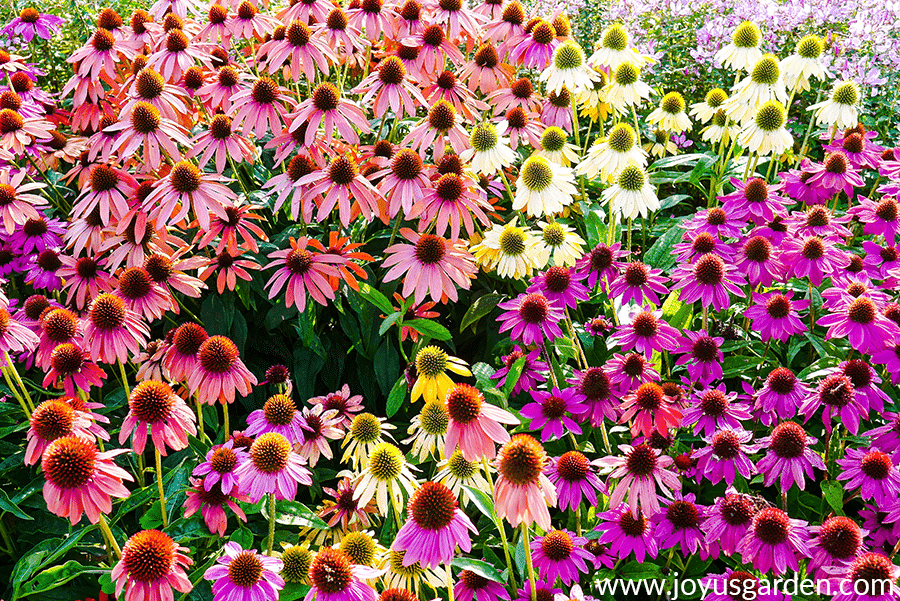
Lots of colors of Echinacea (Cone Flower), which is a very popular summer into fall blooming perennial.
Amend the soil before planting
This is key. You need healthy soil in order for the plants to do well. It’s the foundation for your plants to bloom and grow.
Be sure to work the soil before planting and aerate it so the roots can easily grow.
You want it to be well amended with organic matter ( mulch, amendment, or compost), have good drainage, and be as rich as can be.
If your soil has a lot of clay, you’ll amend it differently than if your soil has a lot of sand or sandy loam. Your local nursery or landscape supply business will be able to help you choose what amendments are right for your garden.
Or, if you’re new to an area or new to gardening, you may consider having a soil test done to see if there are any deficiencies in your planting beds. You can contact your county extension office to have a soil test done.
If you have multiple beds or a large area to plant, buying soil and/or amendments in bulk from a local landscape supply company and having it delivered is the most economical way. This applies when you’re feeding new or top dressing established beds.
For a small bed or containers, the bagged option is the way to go. In fact, many landscape supply companies let you bag your own so you get compost specific to your area and the plants you’re growing. You can see what I mean here.
I’m not big on fertilizer when planting and used it only when planting annuals, rose plants (not bare-root), camellias, citrus, and rhododendrons. I throw in some compost when planting perennials, shrubs, and trees.
Related: A Guide To Soil Amendments
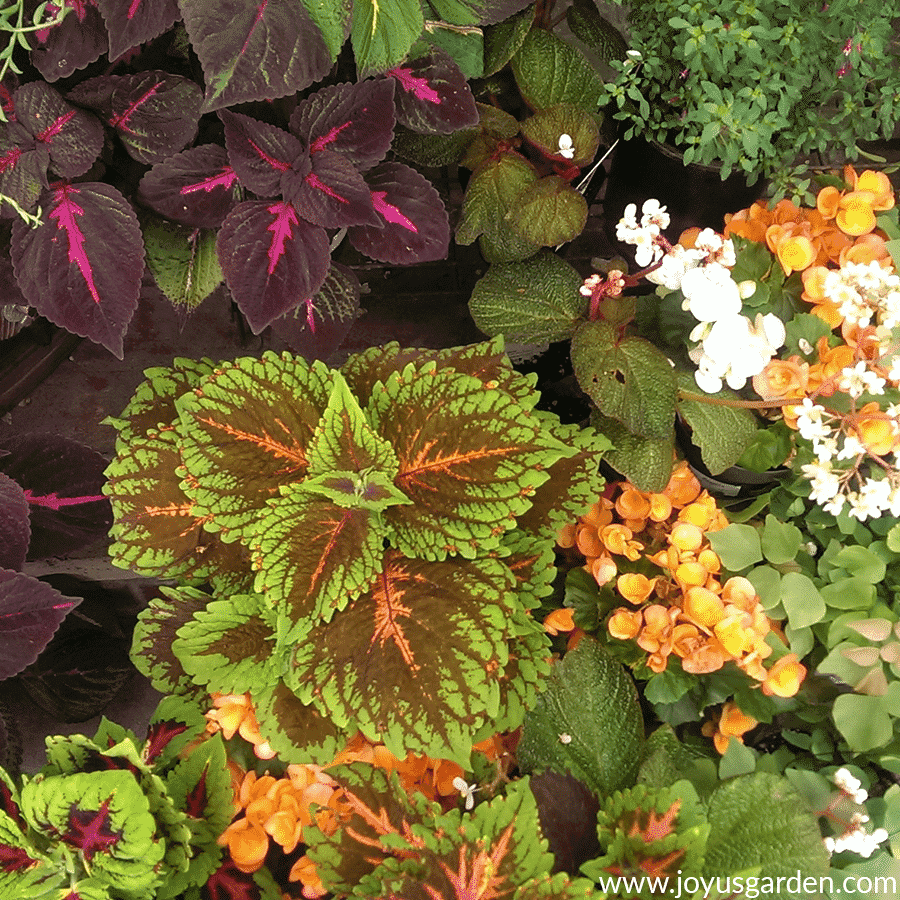
Compost established beds
Consider composting your beds every year or 2 as this is generally the best way to feed trees, shrubs, and perennials. As I said, I’m not big on fertilizers and use them only on certain plants or those with deficiencies.
If you amend on a regular basis, once every 1-2 years, this helps to encourage fertile soil and soil organisms. Your flower beds will be as happy as can be.
Feed the annuals
You need to feed annuals and roses 2 or 3 times during the summer season. They flower like crazy and need the nourishment to keep them flowering away.
Blend for Annual Flowers (And Roses Too)
I was a professional gardener in the San Francisco Bay Area for over 20 years and this was my favorite blend. I still use this mixture except I add worm compost instead of chicken manure.
2 parts rose and flower food
1 part alfalfa meal
1 part chicken manure
I use organic materials and ingredients as well as organic fertilizers. How much of the above blend you use depends on the size of the plants you’re planting or the established ones you’re feeding. Just follow the recommended amount on the rose and flower food box.
Related: Answering Your Questions About Fertilizing & Feeding Roses
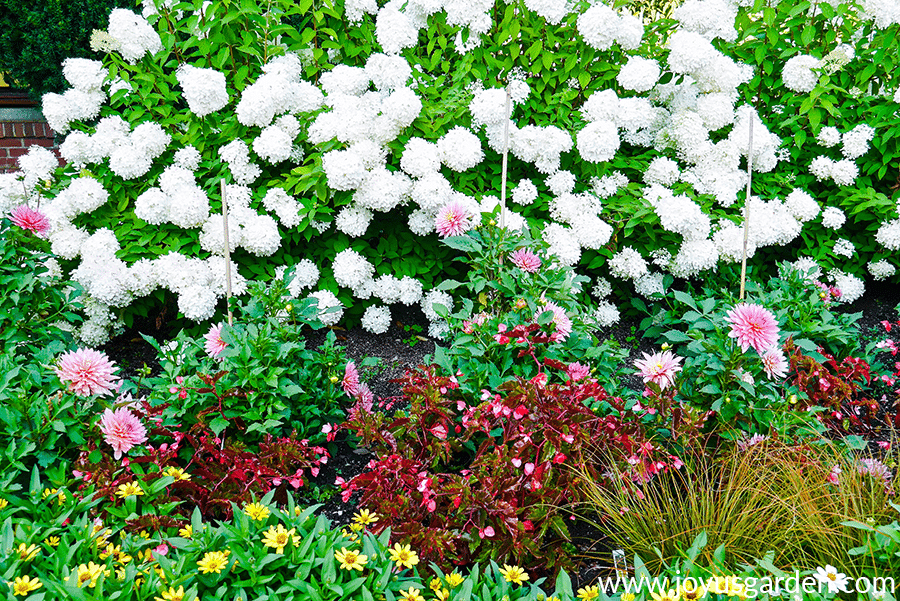
Pruning
Pruning is one of my favorite parts of gardening. I now live in the Arizona desert where I don’t do anywhere near the amount of pruning that I used to do when I lived in New England and on the coast of California. I always loved doing a big fall prune as well as a spring prune and clean up.
Deadheading and pruning are usually essential for repeat or continued bloom, depending on what you’ve planted. Many annuals, perennials, and roses need it to bring on the next flush of blooms, to keep them from getting too leggy, and/or to maintain good form.
Plants stay healthier when properly pruned. Just make sure your pruners are clean & sharp.
Clean the Flower Beds
Keeping your flower beds clean helps to keep diseases, viruses, and insects at bay or to a minimum. For most plants, this isn’t an issue but roses are especially susceptible. Cleanliness is key so just make sure you keep your eye out for aphids, beetles, rust, mildew, black spot, etc.
Pesticides
This is important: after you’ve planted your organic flower beds, don’t use pesticides. They don’t belong in an organic garden.
We don’t want to poison the bees, beneficial insects, butterflies, birds, etc that visit our gardens, not to mention our children, our precious pets, and ourselves.

Seasonal Care of Organic Flower Beds
Spring is time to start seeds, prune, clean up, and prep for the busy growth period ahead. And, it’s prime time to shop for plants!
Summer is when your flower bed is in full regalia. Make sure it’s getting enough water whether it be from the sky, drip system, hose or watering can.
Keep up on the weeding and control insects with a spray of the hose or with organic remedies such as neem oil orinsecticidal soap.
For best results, deadhead annuals and cut back the perennials as needed to encourage more flowering though out the season. Most shrubs don’t need a lot of pruning and trees even less.
Pay attention to how your shrubs and trees grow and if they have any specific care needs. For instance, a hydrangea does best with yearly pruning whereas something like boxwood or myrtle doesn’t need it.
Fall is clean-up time and winter is sleepy time. Flower beds take some work but it’s a labor of love. Done organically, it’s so much better for you and all the other living creatures visiting and inhabiting your garden.
Organic Flower Gardening In Containers
Yes, growing a flower garden in containers is another way to go. Depending on the size of the pot, you can plant smaller shrubs, perennials, and annuals all in the same one.
The principles of organic flower gardening in this post apply but there are a few differences. The weeds are fewer, watering is usually more frequent, no bed prep is required because you use potting soil, and smaller quantities of amendments and fertilizers are used.
I’ve always loved the look of a beautifully planted container or 2 full of flowering plants and beautiful foliage placed in a garden bed.. Not only does it provide color, but also serves as a focal point if necessary.
Related: Roses For Container Gardening
Flowers bring so much color to our lives. Organic flower gardening is the way to go so we can have scrumptious bouquets like in the lead photo. Can we ever have too many flowers?!
Happy gardening,

